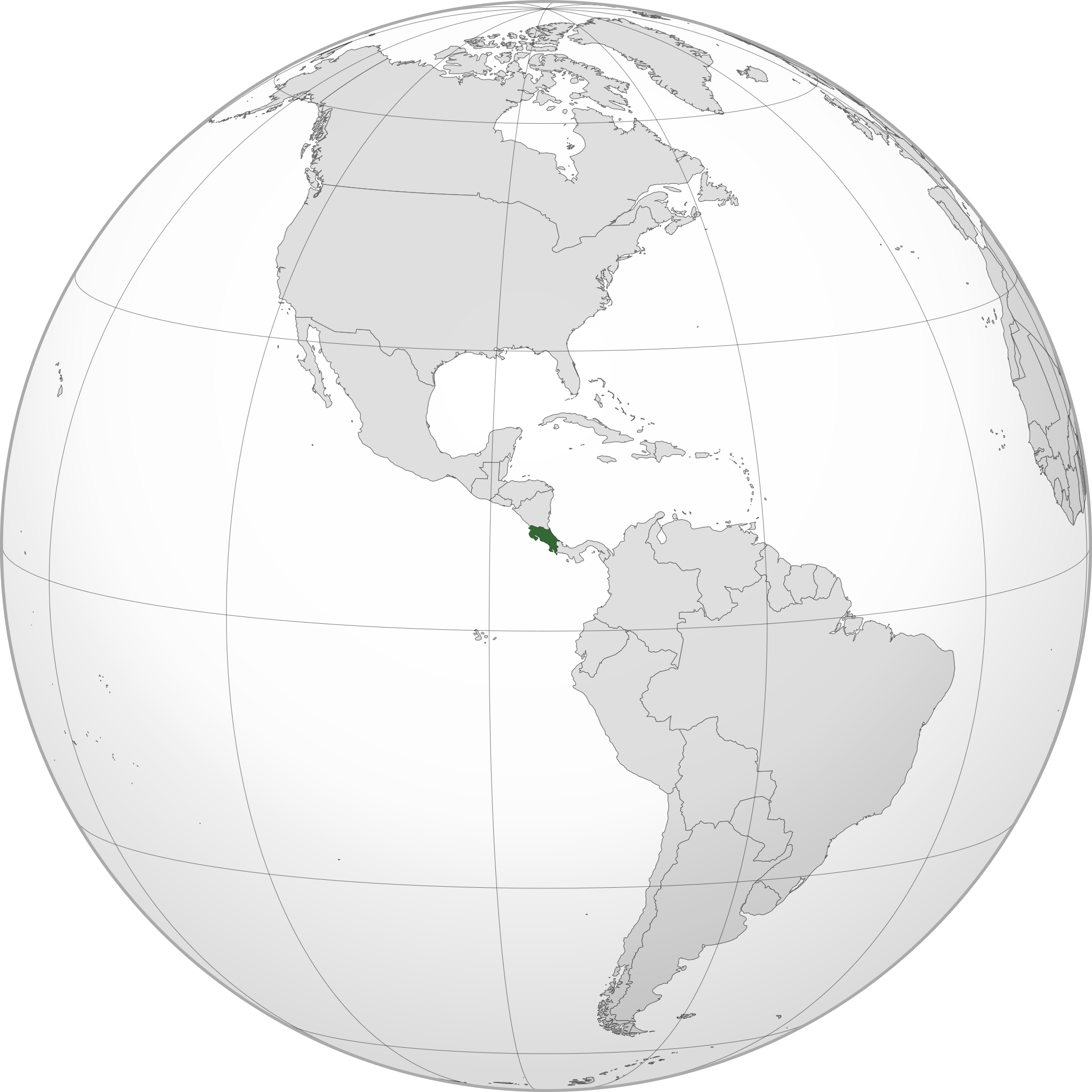More languages
More actions
| Republic of Costa Rica República de Costa Rica | |
|---|---|
 | |
| Capital and largest city | San José |
| Official languages | Spanish |
| Recognized regional languages | Bribri Jamaican Patois |
| Dominant mode of production | Capitalism |
| Government | Unitary presidential republic under a dictatorship of the bourgeoisie |
• President | Rodrigo Chaves |
| Area | |
• Total | 51,100 km² |
| Population | |
• 2022 estimate | 5,204,411 |
Costa Rica, officially the Republic of Costa Rica, is a country in Central America bordered by Panama to the south and Nicaragua to the north, as well as the Pacific Ocean to the west and the Caribbean Sea to the east.
History
Spanish colonization
Costa Rica was first discovered by Europeans in a voyage by Christopher Columbus in 1502. Spanish colonization began in 1513 but it took until the 1560s for the Spanish to fully take possession of the territory due to fierce resistance from the native population but in 1560 it became part of the Spanish Captaincy General of Guatemala. During Spanish rule, lasting from the 16th century to the early 19th century, indigenous culture was destroyed and their land expropriated to be used as plantations.[1]
Independence
Along with the rest of Spanish occupied America, Costa Rica rose up against Spain in the Spanish American wars of independence. Costa Rican independence was declared on September 15, 1821 which was followed by a struggle over whether to have complete independence or join the Mexican Empire. Costa Rica joined Mexico in 1822 only for the empire to collapse in 1823 which resulted in Costa Rica instead joining the Federal Republic of Central America, which it would remain in until full independence in 1838.[1]
Republic
When Statesian colonizer William Walker began invading Nicaragua in 1854, Costa Rican troops joined in forcing him out of Central America as part of the Filibuster War. The Costa Ricans defeated Walker at Santa Rosa on March 20, 1856, and again at Rivas on April 11, eventually leading to the Walker's defeat.[1]
The Costa Rican economy experienced an upswing in the 1850's and coffee and banana's began to be produced for export, however in the 1870s, Statesian capital began to infiltrate Costa Rica. Foreign companies began winning contracts to build plantations and railways whilst the United Fruit Company began seizing huge plantations and imposing exploitive treaties, eventually taking control over roughly 10% of Costa Rican territory and achieving a monopoly over bananas as well as influencing politics.[1]
In 1921 Statesian imperialists provoked the Coto War between Costa Rica and Panama over the disputed Coto region resulting in a US enforced peace in which Costa Rica gained the disputed territory in order to expand Statesian influence in Costa Rica.[1]
José Figueres headed a liberal military junta in the 1940s before serving as an elected president from 1953 to 1958. He gave political asylum to communists and other political dissidents fleeing from right-wing dictatorships. Figueres supported an assassination attempt against Nicaraguan dictator Anastasio Somoza García, which led Nicaragua to invade Costa Rica.[2]
Figueres became president again in May 1970. Costa Rica became the first country in Central America to establish diplomatic relations with the Soviet Union and Eastern Bloc.[3]
References
- ↑ 1.0 1.1 1.2 1.3 1.4 A. D. Dridzo, A. I. Mosolov (1979). The Great Soviet Encyclopedia: 'Costa Rica; Historical survey'.
- ↑ William Blum (2003). Killing Hope: 'Costa Rica mid-1950s: Trying to topple an ally, part I' (pp. 82–84). [PDF] London: Zed Books. ISBN 1842773682
- ↑ William Blum (2003). Killing Hope: 'Costa Rica 1970-1971: Trying to topple an ally, part II' (p. 240). [PDF] London: Zed Books. ISBN 1842773682


